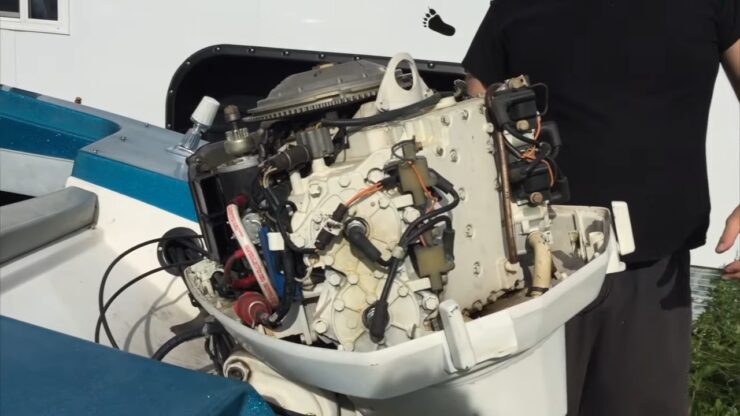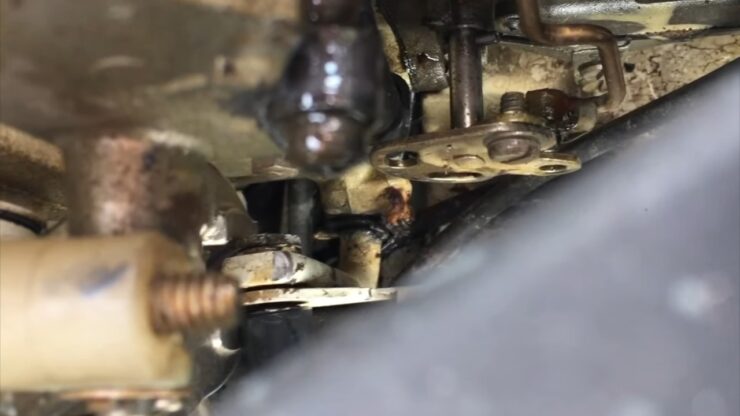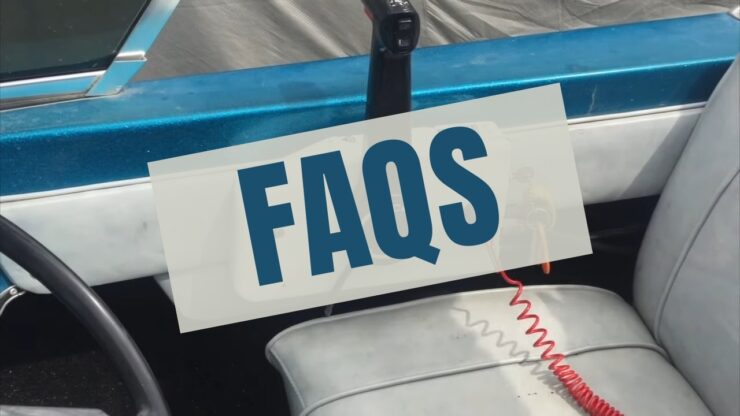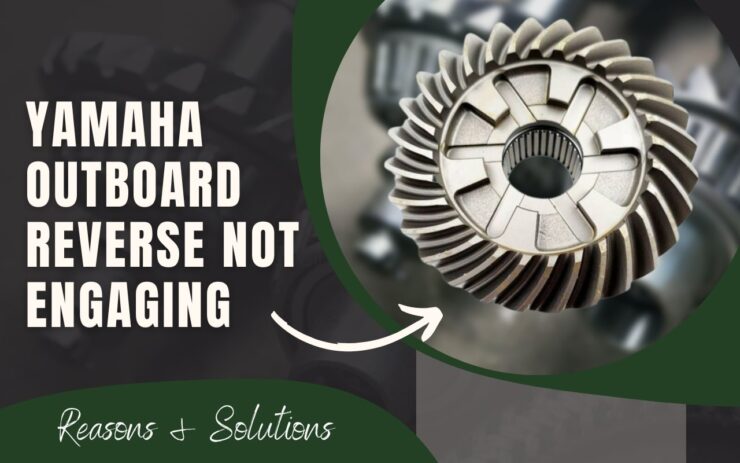The ability to go in reverse is an essential function of any boat, and Yamaha outboard motors are no exception. Whether you’re navigating tight spaces or need to back out of a tricky situation, reverse gear is an important feature.
You’re on a nice boat ride. But as you go to shift your outboard to reverse you see that you can’t. We understand how scary and frustrating this situation is for you.
So, why is your Yamaha outboard reverse not engaging?
Yamaha outboard reverse may not engage because of your lower engine getting damaged. Moreover, there can be various cable issues like linkage and disconnection On top of that rusty steel shaft may cause these problems as well. So for the reverse to enhance you need to fix these!
Wondering how you’re going to fix this problem of yours? Then keep on reading. We’ve provided an in-depth guide to each of these problems.
So what are we waiting for? Let’s jump right in!
Table of Contents
ToggleHow to Engage Reverse on a Yamaha Outboard Motor
Engaging reverse on a Yamaha outboard motor is a straightforward process, but it’s essential to follow the correct steps to avoid damaging the engine or propeller. Here’s how to engage reverse:
- Bring the boat to a complete stop.
- Shift the remote control or tiller handle into neutral.
- Rotate the remote control or tiller handle to the reverse position.
- Gradually increase the throttle to move in reverse.
It’s important to note that Yamaha outboard motors have a safety mechanism that prevents the engine from starting while the gear shift is engaged. This feature prevents accidents and protects the engine and propeller from damage.
Troubleshooting a Yamaha Outboard That Won’t Shift into Reverse

A Yamaha outboard might not engage in reverse for a variety of reasons. It’s important to identify the exact problem to fix this issue.
Here we have detailed the problems you need to tackle on an orderly basis. So that you can check and finally isolate the main problem.
So without wasting any time let’s get into the troubleshooting part!
Reason 1 of 4: Disconnected Cable
The outboard motor fails to reverse if the shifting cable comes out of its mount. Look at the area where the shifting cable is attached to the motor to the shifting lever. Check if the lever is moving when you’re moving the shifting lever on your control box. If it isn’t then the problem is in the junction. In this case, a mount or a pin might have come out.
Solution
For this problem, you need to reconnect or install the cables back again. To do this you need to
purchase some mounts or pins.
Then using these connect the shifting cable with the engine. After that, check whether your outboard can reverse now. If it’s not working try this next solution.
Reason 2 of 4: Shift Cable Issue
If you see that the cable isn’t disconnected then your shift cable isn’t working properly. Shift cable problem is the most common cause of your outboard not engaging in reverse.
To see if that’s the issue take off the linkage cables at the motors. After that manually shift the linkage. Make sure the engine is not running during the whole process. Also at the same time reduce the prop slip as necessary.
Now listen carefully for a sound. If you can’t feel or hear the shifting taking place then your shift cable is probably damaged. And the clips retaining them are popped.
Solution
To fix these you need to change the shift cable. You can easily change the shift cable by yourself at home. Just check beforehand whether the cable needs to be shorter or longer to reverse.
Now here’s how you’ll have to change it. First, take the plastic clip out and lift the cable end off the pin. After that loosen the retaining nut of the cable pin.
Then spin the whole cable to make it shorter or longer as per your need. You can use the twisting adjustment at the engine end to alter the length. Finally, attach everything back and test whether the prop is engaged by turning both sides. That’s basically how you can fix it!
Reason 3 of 4: Rusty Steel Shaft

Sometimes you might notice that the steel shaft of your outboard is rust infested. This is one of the main problems your Yamaha sx210 can face. This is particularly common for older models of Yamaha.
To identify it simply look at the midsection where it attaches with the shift linkage. If you find rust there then your Yamaha outboard might not go into reverse because of this.
Solution
Unfortunately, the only solution for this is to change the steel shaft. Rust damage is most of the time irreversible. So once your steel shaft is rusty you can’t use it anymore.
Start by purchasing a replacement kit online or at your local hardware store. Then follow the instructions of the kit and replace the steel shaft.
Reason 4 of 4: Lower Unit Problems
This is one of the common reasons why your outboard isn’t shifting to reverse. To check if you have this problem you have to check the oil and the water seepage. You notice that some water has entered the oil and into the lower unit. This is an indication of lower unit damage.
There’s a chance that this happened due to prolonged outside exposure. In that case, you need to fix your outboard motor. In addition to that, also check for metal shavings or chipped inner parts. These indicate whether your lower end is damaged or not.
Solution
Now you can start by draining the oil and locating the leak and fixing it. However, if it’s a small one or a big one you need professional assistance for this. Because besides attending to the leak there are other damages that need fixes as well.
Moreover, it’s going to be an expensive repair in case water ingress inside your gearbox.
This is basically how you fix the outboard not reversing problem.
FAQs

Can weather cause my Yamaha outboard to not engage in reverse?
Weather isn’t directly related to your outboard not engaging in reverse. However, excess rain or humidity might cause your engine to develop rust, causing this problem.
How can I make sure that my outboard doesn’t get rusty?
Always being on the lookout will help you detect rust sooner. Make it a habit of checking every part from time to time of your outboard motor. In this way, you can keep rust at bay.
Why is my outboard not engaging both forward and reverse?
If your boat won’t shift both forward and reverse then your shift linkage might be disconnected. Simply connecting the shift cable with the engine using mounts will resolve the issue.
Can I use reverse to slow down my boat instead of brakes?
No, it’s not recommended to use reverse to slow down your boat. Brakes or reducing the throttle are better options for slowing down your boat.
Do Yamaha outboards have fuses?
Yes, Yamaha outboards have fuses. The main fuse is located on the engine and is typically located near the battery or on the port side of the engine. Additionally, there may be smaller fuses located on the wiring harness, which may be used to protect particular circuits. It is important to check the manual or other documentation that came with the engine for more specific information on the location of the various fuses.
How do you adjust the shift link on a Yamaha outboard?
To adjust the shift link on a Yamaha outboard, follow these steps:
- Shift the outboard into neutral by pushing the shift lever forward.
- Locate the shift link rod. It is a metal rod that connects the shift lever to the shift shaft on the engine. It is usually located near the top of the outboard, just behind the carburetor.
- Loosen the lock nut on the shift link rod using a wrench.
- Turn the shift link rod clockwise to increase the tension or counterclockwise to decrease the tension. Adjust the tension until the shift lever engages smoothly and easily.
- Tighten the lock nut on the shift link rod with a wrench to secure the adjustment.
- Test the shift lever to ensure it is engaging properly. Shift the outboard into forward and reverse and make sure it engages smoothly.
- If the adjustment is not correct, repeat steps 3-6 until the shift lever engages properly.
Bottom Line
We’ve finally reached the end of our article. We hope we could clear out why your yamaha outboard reverse not engaging. If you’re unable to resolve the issue on your own call a professional!
Until then stay with us!
I’m Liam Jackson, the proud owner and driving force behind KayakPaddling.net. Born somewhere in the expansive beauty of the United States, I’ve nurtured a lifelong passion for kayaking and fishing that has led me to explore the far corners of our nation’s waterways.
Related Posts:
- 16 Best Kayak For Beginners 2024 - Kayaking Adventure Gear
- 12 Best Beach Wagons & Carts 2024 - For All-Terrain
- 10 Best Fish Finders Under $200 2024 - Top Affordable Picks
- How to Stay Safe on Slow Moving Waters When Paddle Boarding?
- Heavy Duty Fishing: 11 Best Rods And Reels For Big Fish 2024
- 13 Best Fishing Kayak Under $500 in 2024 -…












